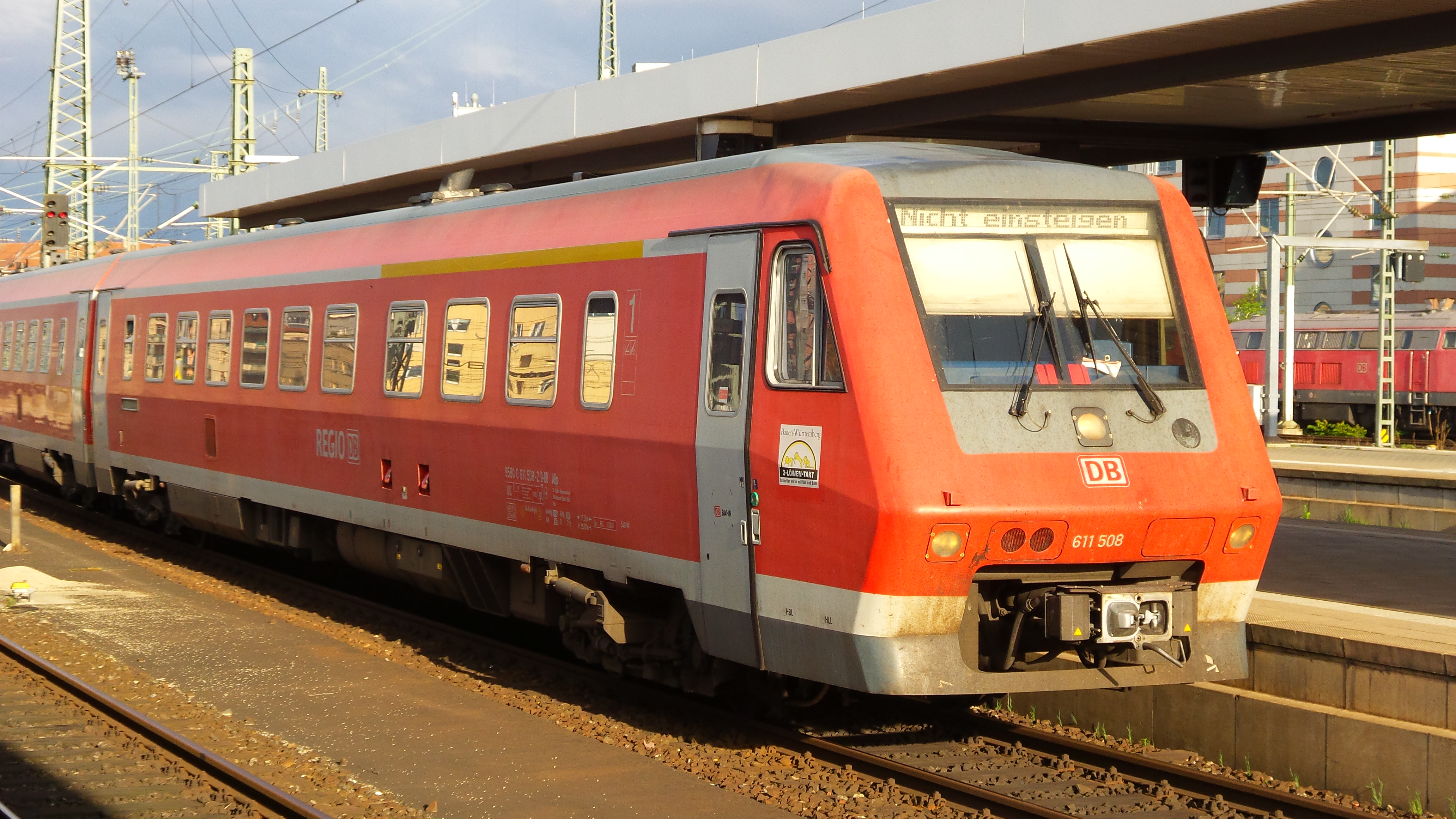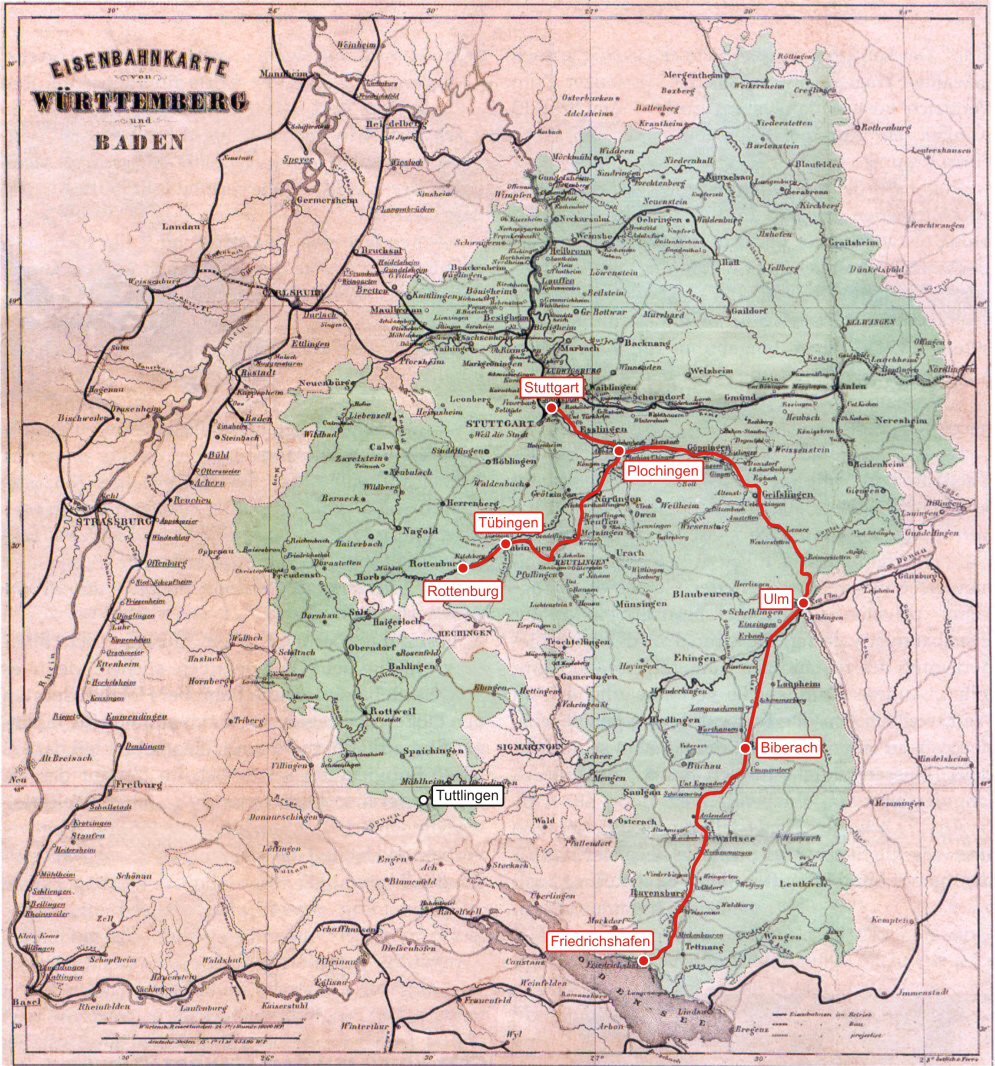|
Neustadt (Schwarzwald) Station
Neustadt (Schwarzw) station is one of two stations in Titisee-Neustadt in the German state of Baden-Württemberg. The other is Titisee. It is located in Neustadt at 805 metres above sea level on the Höllentalbahn, which links Freiburg with Donaueschingen. The station has three platform tracks and is classified by Deutsche Bahn (DB) as a category 5 station. Established in 1887, the entrance building is now heritage-listed and houses among other things a DB agency with ticket sales. Location Neustadt station is approximately 200 metres west of the centre of Neustadt, a district of the municipality of Titisee-Neustadt. The station building is east of the tracks and has the address of ''Bahnhofstrasse 1''. The station area is to the west of Bahnhofstrasse and Saiger Straße (street) crosses over the station tracks at a level crossing at the southern end of the station. North of the station there is another level crossing over Schwarzenbachweg. State road 172 crosses the stati ... [...More Info...] [...Related Items...] OR: [Wikipedia] [Google] [Baidu] |
Ringzug
The Ringzug ("ring train"), also called the 3er-Ringzug ("ring train of the 3") is a passenger transport network in the districts of Tuttlingen, Rottweil and Schwarzwald-Baar in southern Baden-Württemberg, Germany. The Ringzug went into regular operations on 31 August 2003 and has operated in its current form since 12 December 2004. The concept of the Ringzug is the operation of a clockface timetable, coordinated with a variety of other buses and train services, over an S-Bahn-like network in a rural environment. In March 2006, the passenger association ''Pro Bahn'' described the Ringzug as an exemplary public transport system at its 2006 passenger transport awards (''Fahrgastpreis 2006''). The Ringzug has aroused interest beyond the region and can point to steadily rising passenger numbers and declining deficits. Name The term ''Ringzug'' was chosen because its route was originally intended to form a ring, but it is interrupted by the gap between Immendingen and Donau ... [...More Info...] [...Related Items...] OR: [Wikipedia] [Google] [Baidu] |
Deutsche Reichsbahn
The ''Deutsche Reichsbahn'', also known as the German National Railway, the German State Railway, German Reich Railway, and the German Imperial Railway, was the German national railway system created after the end of World War I from the regional railways of the individual states of the German Empire. The ''Deutsche Reichsbahn'' has been described as "the largest enterprise in the capitalist world in the years between 1920 and 1932"; nevertheless its importance "arises primarily from the fact that the Reichsbahn was at the center of events in a period of great turmoil in German history". Overview The company was founded on 1 April 1920 as the ("German Imperial Railways") when the Weimar Republic, which still used the nation-state term of the previous monarchy, (German Reich, hence the usage of the in the name of the railway; the monarchical term was ), took national control of the German railways, which had previously been run by the German states. In 1924 it was reorganise ... [...More Info...] [...Related Items...] OR: [Wikipedia] [Google] [Baidu] |
DB Class 611
The DBAG Class 611 is a two car, tilting, diesel multiple unit operated by Deutsche Bahn for fast regional rail services on unelectrified lines. General information Class 611, successor to the DB Class 610, was developed using tilting systems from German military technology in favour of the Hydraulic Fiat systems used by its predecessor Because of environmental concerns over the potential hazards of leaking hydraulic fluid an electrically actuated option based on equipment used to keep the guns of tanks level while traversing uneven terrain was used. The Class 611 suffered teething troubles following its entry into service just two years after the contract was awarded and was largely considered a failure. However, 40 are still in use as of November 2015. Tilting technology issues The trains came into service in 1996 and by March 1997 the first problems with the tilting technology occurred. The Federal Railway Authority limited the Class 611 to 120 km/h and required the ... [...More Info...] [...Related Items...] OR: [Wikipedia] [Google] [Baidu] |
Rottweil Station
Rottweil (; Alemannic: ''Rautweil'') is a town in southwest Germany in the state of Baden-Württemberg. Rottweil was a free imperial city for nearly 600 years. Located between the Black Forest and the Swabian Alps, Rottweil has nearly 25,000 inhabitants as of 2020. The town is famous for its medieval center and for its traditional carnival (called "Fasnet" in the local Swabian dialect). It is the oldest town in Baden-Württemberg, and its appearance has changed very little since the 16th century. The town gives its name to the Rottweiler dog breed. History Rottweil was founded by the Romans in AD 73 as Arae Flaviae and became a ''municipium'', but there are traces of human settlement going back to 2000 BC. Roman baths and an Orpheus mosaic of c. AD 180 date from the time of Roman settlement. The present town became a ducal and a royal court before 771 and in 1268 it became a free imperial city. In 1463 Rottweil joined the Swiss Confederacy under the pretence of a tempor ... [...More Info...] [...Related Items...] OR: [Wikipedia] [Google] [Baidu] |
Villingen (Schwarzwald) Station
Villingen (Schwarzwald) station (officially called ''Villingen (Schwarzw)'' by Deutsche Bahn) is one of two stations in Villingen-Schwenningen in the German state of Baden-Württemberg. The other is Schwenningen (Neckar). In addition, there are five more halts (''Haltepunkte''). The station is located east of the old town of Villingen beyond the Brigach. It is located at 704 metres above sea level on the Black Forest Railway and it is the terminus of the Rottweil–Villingen railway. History The building was built before 1869. The station was owned by the Grand Duchy of Baden State Railway (''Großherzoglich Badische Staatseisenbahnen''). Since, however, it was the terminus of the Rottweil–Villingen railway of the Royal Württemberg State Railways (''Königlich Württembergischen Staats-Eisenbahnen''), a locomotive shed and residential building for railway staff were operated by the Württemberg Railways in Villingen in Baden. The two railways shared a goods shed. The cen ... [...More Info...] [...Related Items...] OR: [Wikipedia] [Google] [Baidu] |
Regional-Express
In Germany, Luxembourg and Austria, the Regional-Express (RE, or in Austria: REX) is a type of regional train. It is similar to a semi-fast train, with average speed at about 70–90 km/h (top speed often 160 km/h) as it calls at fewer stations than '' Regionalbahn'' or S-Bahn trains, but stops more often than ''InterCity'' services. Operations The first Regional-Express services were operated by DB Regio, though since the liberalisation of the German rail market (''Bahnreform'') in the 1990s many operators have received franchise rights on lines from the federal states. Some private operators currently operate trains that are similar to a Regional-Express service, but have decided to use their own names for the sake of brand awareness instead. Regional-Express services are carried out with a variety of vehicles such as DMUs (of Class 612), EMUs (of Class 425 or 426) or, most commonly, electric or diesel locomotives with double-deck cars, the latter often with ... [...More Info...] [...Related Items...] OR: [Wikipedia] [Google] [Baidu] |
Ulm Hauptbahnhof
Ulm Hauptbahnhof is the main station in the city of Ulm, which lies on the Danube, on the border of the German states of Baden-Württemberg and Bavaria in the Danube-Iller region (''Region Donau-Iller''). Ulm Hauptbahnhof has twelve platforms, of which five are terminating platforms, and forms a major railway junction. Other stations in the city are Ulm-Söflingen to the west and Ulm Ost (east) to the east and Ulm-Donautal (Danube valley) in the industrial area. The Ulm marshalling yard is located to the west of the city. Neu-Ulm (New Ulm), which lies across the Danube in Bavaria, has the stations of Neu-Ulm, Finningerstraße and Gerlenhofen. Ulm is located on the railway line from Stuttgart to Munich, over which Intercity-Express trains operate, and part of the Magistrale for Europe (trunk line) from Paris to Budapest. European cities such as Amsterdam, Budapest, Paris and Linz can be reached without transfers. Every day, about 29,000 passengers use the station. It is used dail ... [...More Info...] [...Related Items...] OR: [Wikipedia] [Google] [Baidu] |
Tuttlingen Station
Tuttlingen station is the most important of the eight railway stations in Tuttlingen in the German state of Baden-Württemberg. The station was built between 1928 and 1933 at a new location and replaced the original much smaller Tuttlingen station built in 1869. Tuttlingen station is a railway node at the intersection of the Stuttgart–Hattingen railway and the Tuttlingen–Inzigkofen railway. The station is connected to the InterCity network and is one of the most important stations in the Ringzug ("Ring Train") network. It serves as the main hub for public transport in the Tuttlingen district. History The station of 1869 Tuttlingen connection to the railway In the mid-19th century, Tuttlingen was near the border of the Grand Duchy of Baden in the south of the Kingdom of Württemberg. It was very conveniently situated on the so-called Swiss Post Road (''Schweizer Poststraße''), a major north–south road link from Stuttgart to the Swiss border near Schaffhausen. In 179 ... [...More Info...] [...Related Items...] OR: [Wikipedia] [Google] [Baidu] |
Freiburg (Breisgau) Hauptbahnhof
Freiburg Hauptbahnhof is the main railway station in the German city of Freiburg im Breisgau. The Rhine Valley Railway (Mannheim–Basel), Höllentalbahn ("Hell Valley Railway", Freiburg–Donaueschingen) and the Breisach Railway (Breisach–Freiburg) meet here. The station is located on the western outskirts of the Old Town of Freiburg, about a kilometre from Freiburg Minster at 5–7 Bismarckallee. This street is also fronted by the Freiburg concert hall (''Konzerthaus Freiburg''), several hotels and the ''Jazzhaus Freiburg'' jazz club and the ''Xpress'' office complex was built along the line in 2008. The first station building was built in 1845 in the Rundbogenstil ("round arch style"), with Romanesque Revival elements. A temporary station built after the destruction of the station in 1944/45 lasted 50 years. This was replaced around the turn of the 21st century with an ensemble of buildings, including the station hall, a shopping mall, hotels and office blocks. With aroun ... [...More Info...] [...Related Items...] OR: [Wikipedia] [Google] [Baidu] |



.jpg)
_(2).jpg)


